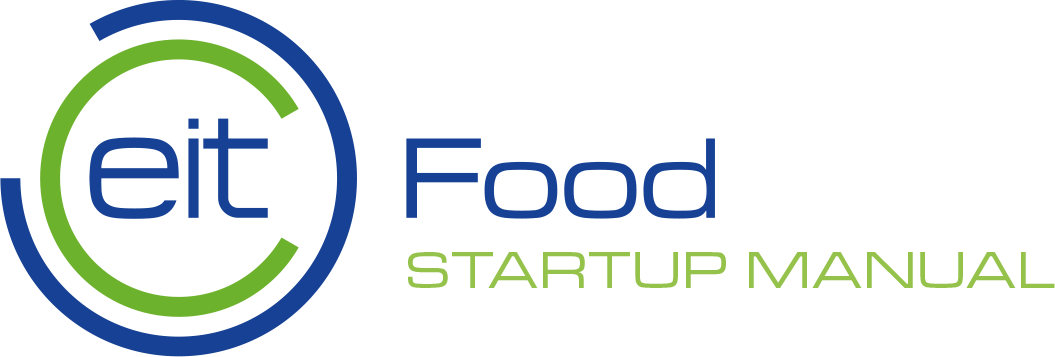Module 2 - Proving to the world that your idea is worthy and developing a proposition
2. Market research
Whether you’re at the idea stage, making changes to an existing product/service or looking at developing a new product, you will need to conduct market research at some point. An important part of business success is being able to make well informed decisions
and you’ll be much better positioned to do that by understanding the market(s) you’re operating in. Having a clear and strong understanding of your market(s) will also enable you to better focus your product/service, your marketing strategy and to convince others, such as investors and potential customers, to come on board.
Primary v secondary
Primary market research is information you gather yourself, for instance by interviewing potential customers or consumers. Some (like the ICURE programme) suggest you should speak to up to 100 potential customers before launching your business. You can pay someone to conduct this research for you though in the very early phases of a startup (with little funds), this is unlikely. Secondary market research is information you gather from existing sources like studies, publications, trade reports – you can gather it from a whole range of places like government documents, research put out by trade bodies, large companies, thought leadership from large incumbent businesses…. Market reports published by companies like Mintel and Frost & Sullivan are very expensive so it’s worth checking big public libraries near you as they often house these and may be a good place to start.
Is one research better than another? You’ll want to gather both types. Nothing beats direct information and insights you can get on your specific market. However, you’ll also need macro-level information to paint a proper picture of the viability of your business idea and you’re unlikely to gather that information yourself (it also probably wouldn’t be a great use of your time or resources).

Qualitative v quantitative
Qualitative research focuses on how and why people think and feel about something whilst quantitative research will deliver facts and figures. There are benefits to both. Since the food industry evokes strong emotions in people, it makes sense to use qualitative research to understand what motivates people to make certain decisions around food (e.g.: what would make them choose one type of drink over another) or how they feel about certain food innovations (e.g.: would they be happy to eat meat grown in a lab). The downside of qualitative research is that people’s actual behaviours differ from their intentions. So, whilst they may say they would choose one brand over another because of ethical considerations, unconsciously it may be price that is the ultimate factor in their decision making. Quantitative research, on the other hand, is data driven. This research is conducted through questionnaires, polls, surveys and studies. Whilst it’s much more data driven, it can still be used to understand certain behaviours and particularly the appetite for a product or service.
Case study: Nice & market research

“I’m lucky – I previously launched Cuckoo and that taught me so much on how to launch Nice. I’ve done everything differently; with Cuckoo, I was really young, fresh out of university and didn’t even know what FMCG stood for, or understand what categories* meant, what a category size was and launched a bircher muesli brand which was a £1 million category. With canned wine, when we had the idea, the first thing we did was invest a bit of money, well quite a bit of money for a startup to buy the category data which showed us the size of the market in detail. That meant we automatically knew that we were going after a big addressable market. Biggest learning curve.”
-Lucy Wright, Co-Founder at Nice(*A “category” refers to a branch/group of FMCG (Fast Moving Consumer Goods) products that share similarities. For instance, there are categories for drinks, fresh produce, snacking, beauty products, etc. This term is used in the retail sector. Larger retailers have category buyers – someone focusing solely on one category.

Competitive landscape
As part of your market research, you’ll want to spend a fair bit of your efforts exploring what your competitors are doing. This is essential to gain an understanding of what threats they pose to your business, what you can learn from them and what you can do differently. It’s likely that you’ll do this as secondary research (i.e.: by finding information that is publicly available) but depending on your business, there may be opportunities to speak to them directly. Within the sustainability context, competitive companies may be happy to share information. It makes sense as the motivation behind these companies is to create positive change in the world and so knowledge sharing benefits a greater cause.
You can start your competitive analysis by identifying several companies, we suggest going for the top 10 but choose more or less as you please. Categorise these as direct or indirect competition. For example, a popcorn brand could categorise other popcorn brands as direct competition and other snack companies such as crisps as indirect competition. Once you’ve identified who your competition is, gather different types of information on them. This will vary according to the business or product/service in question.
- Product/service: what are their product or service characteristics, how do they differ from yours? What’s their pricing strategy? How much traction has their product or service gotten?
- Business model: how does their business model differ from yours? Are there gaps in their business models or areas for improvement?
- Marketing: how do they communicate what they’re doing?What does their website say? Do they have reviews/testimonials so you can see what other people say about them? Have they gotten a lot of media coverage?
- Organisation: who is on their team? Their board? Do you know who their advisors are? Where they are located?Is that a better or worse location for starting a business than yours?

A strong understanding of your competition will help you develop your company’s competitive advantage and set you apart, this is particularly important in a crowded market. Some industries are more competitive than others. If you’re developing a food brand that is targeting large retailers, be prepared to constantly defend why your product is different or better than what’s already out there. If you’re developing an innovative technology like a label that expires at the same speed as your food (check out Mimica Touch), you might face less direct competition but there will be other barriers to entry!
Case study: Olio - market research & proof of concept

Olio is a mobile app for food-sharing, aiming to reduce food waste. It does this by connecting those with surplus food to those who need or wish to consume such food. Olio founders conducted three key pieces of market research before launching Olio.

„În primul rând, am făcut cercetări de birou pentru a afla magnitudinea unei probleme de deșeuri alimentare și ceea ce am descoperit ne-a îngrozit: la nivel global, 1/3 din produsele alimentare sunt aruncate, iar în ţările dezvoltate, peste jumătate din cantitatea totală de deșeuri alimentare provine din gospodării. Următoarea etapă a cercetării a fost un sondaj pe care l-am distribuit prin e-mail și pe reţelele sociale, al cărui obiectiv era
să descoperim dacă oamenilor le pasă într-adevăr de problema deșeurilor alimentare. Perspectiva esenţială pe care am descoperit-o a fost că 1 din 3 persoane este „mâhnită” atunci când aruncă alimente în stare bună, ceea ce ne-a dat încrederea că deșeurile alimentare sunt cu siguranţă una dintre principalele probleme ale oamenilor. Și, în cele din urmă, am pus
la încercare conceptul prin WhatsApp și am rugat 12 necunoscuţi care locuiau unul lângă altul să intre pe un grup de WhatsApp și să partajeze orice surplus de alimente pe care l-ar putea avea timp de 2 săptămâni. Feedbackul de la această acţiune ne-a convins să continuăm și să ne investim economiile în construirea primei versiuni a aplicaţiei OLIO! Primim zilnic feedback de la utilizatorii noștri, în principal prin e-mail, facem sondaje periodic și obţinem feedback la întâlniri.”
– Tessa Stuart, cofondatoare și CEO la compania Olio

How to ask good questions?
When asking questions, it’s important you do so in a way that enables potential customers to give genuine feedback and not confirm your bias. A great book on the subject is “The Mom Test”. Instead of asking direct questions like “do you like this?” or “would you buy this?”, ask more exploratory ones like “how do you currently solve this problem?”. Make sure you ask questions that can both support and disagree with what you’re doing.
“Everyone is lying to you. They say you shouldn’t ask your mom whether your business is a good idea, because she loves you and will lie to you. This is technically true but is misses the point. You shouldn’t ask anyone if your business is a good idea. It’s a bad question and everyone will lie to you at least a little. It’s not their responsibility to tell you the truth. It’s your responsibility to find it.”
-Rob Fitzpatrick, author of “The Mom Test”

SWOT analysis
A SWOT analysis is a strategic analysis looking at Strengths, Weaknesses, Opportunities and Threats. It isn’t, by any means, limited to the startup world and can be used at different times throughout the lifecycle of any business. It’s a useful tool to help you figure out business strategy and competitive advantage, or indeed to inform whether you should take the plunge. Strengths and weaknesses are things you have control over as they’re internal to your company whilst opportunities and threats are external, part of the environment you operate in and are out of your control. It’s usually depicted as a grid but feel free to get creative if you’d like to visualise it differently.
Strengths
- Strong team with relevant experience
- Unique product proposition
- First mover advantage
Weaknesses
- Established market with large existing businesses
- No reputation
- Lack of funding
Opportunities
- Growing market
- Veganism trend
Theat
- Lack of existing legislation of new technology
Above: Example of a SWOT analysis
Here are some questions and examples to get you started with a SWOT analysis:
Strengths
- Do you have a strong competitive advantage over others in the industry?E.g.: Mimica Touch has created an innovative one of a kind food label that expires at the same rate as the food it’s associated with.
- Are you the first or amongst the first to bring this type of product or service to the market? E.g.: lab-grown fish is a completely new product. Being the first to market with this type of innovation will be a strength to grab market opportunity, reputation & PR potential. Check out Finless Foods.

- Is there a clear social or environmental benefit to your product? When considering this question, try to take a Food Systems Approach – a multidisciplinary conceptual framework which takes into account relationships between different parts of the food system and how changing one thing can have intended consequences on another (by taking a wider perspective, you may also discover some weaknesses you can address!)
- Can you use your product or service as a platform to talk about an important issue in the world and create positive change in the world? Brands who recognise their responsibility to society and who can make a stand on important issues are the ones that will rise to the top (see the recent Black Lives Matter movement)

Weaknesses
- Are there obvious gaps in your team? E.g.: if you’re developing a business in food tech, are you missing someone with the relevant technical knowledge?
- Do you lack funding to bring your product or service to scale? E.g.: companies heavy in R&D (research & development) may need millions to validate their technology before having a product to sell on the market. This was the case for Entocycle, an automated insect farm that produces environmentally friendly insect protein to feed farmed animals.
Opportunities
- Are there growing market trends you can take advantage of? E.g.: this could be the growth of veganism if you’re making vegan products, or the increase in people reducing their meat intake if you’re developing meat substitutes.
- Are there changes in legislation which support your product/service? E.g.: this could be a country banning large retailers and establishments from sending any food to landfill opening opportunities for food waste businesses.


Threats
- Is your business idea replicable from other competitors? E.g.: a brand making flavoured carbonated water has a business model and product that can be imitated easily.
- Are there environmental threats that can significantly impact your business? E.g.: the cost of your suppliers may fluctuate significantly based on certain events. The price of vanilla recently skyrocketed (2017) to the point where it was found that a huge number of vanilla ice-cream brands did not, in fact, have any vanilla in them (news.sky.com).

